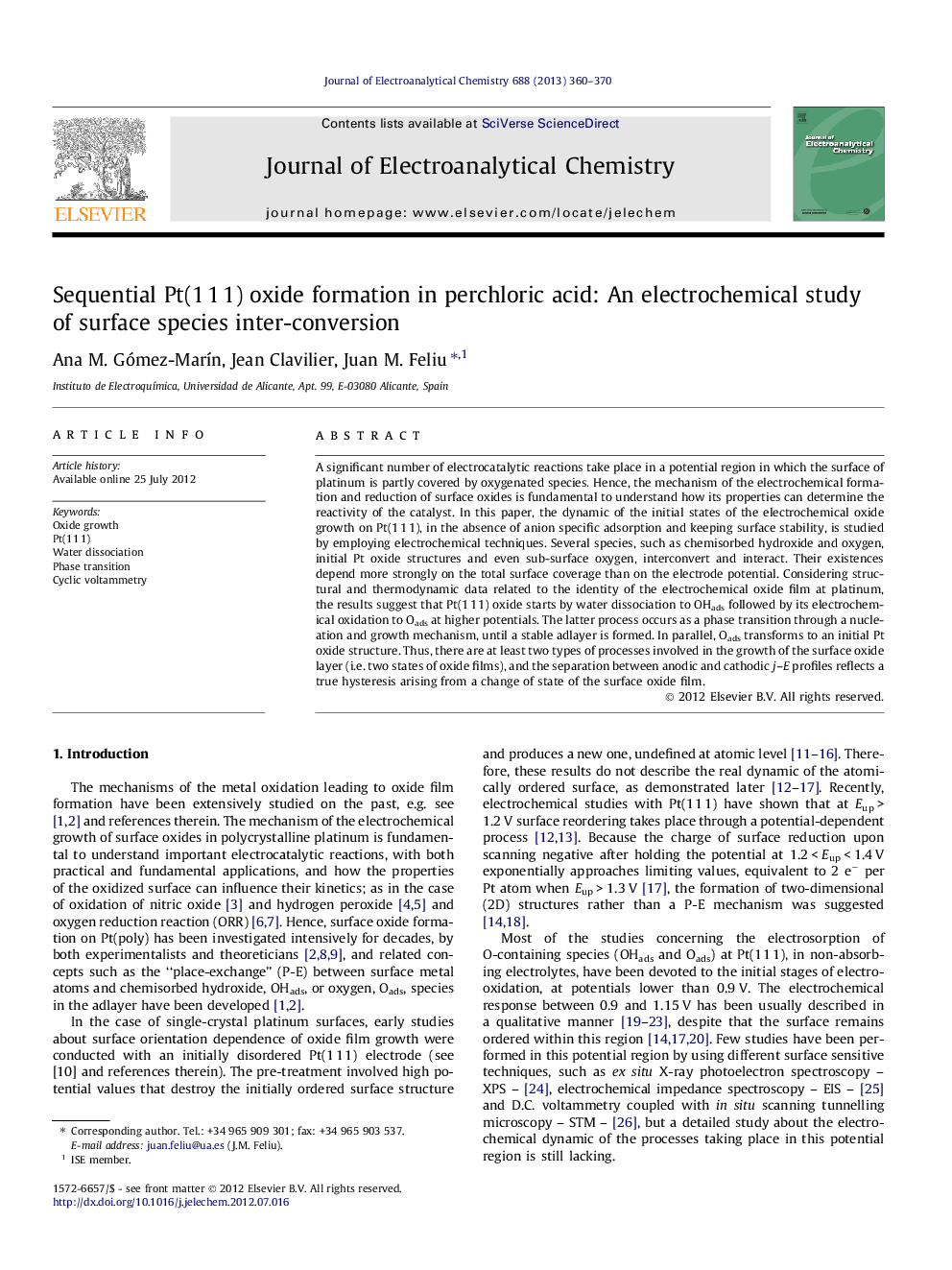| کد مقاله | کد نشریه | سال انتشار | مقاله انگلیسی | نسخه تمام متن |
|---|---|---|---|---|
| 219241 | 463252 | 2013 | 11 صفحه PDF | دانلود رایگان |

A significant number of electrocatalytic reactions take place in a potential region in which the surface of platinum is partly covered by oxygenated species. Hence, the mechanism of the electrochemical formation and reduction of surface oxides is fundamental to understand how its properties can determine the reactivity of the catalyst. In this paper, the dynamic of the initial states of the electrochemical oxide growth on Pt(1 1 1), in the absence of anion specific adsorption and keeping surface stability, is studied by employing electrochemical techniques. Several species, such as chemisorbed hydroxide and oxygen, initial Pt oxide structures and even sub-surface oxygen, interconvert and interact. Their existences depend more strongly on the total surface coverage than on the electrode potential. Considering structural and thermodynamic data related to the identity of the electrochemical oxide film at platinum, the results suggest that Pt(1 1 1) oxide starts by water dissociation to OHads followed by its electrochemical oxidation to Oads at higher potentials. The latter process occurs as a phase transition through a nucleation and growth mechanism, until a stable adlayer is formed. In parallel, Oads transforms to an initial Pt oxide structure. Thus, there are at least two types of processes involved in the growth of the surface oxide layer (i.e. two states of oxide films), and the separation between anodic and cathodic j–E profiles reflects a true hysteresis arising from a change of state of the surface oxide film.
► Detailed study of oxide growth on Pt(1 1 1) in absence of specific adsorption.
► Three O-containing species interconvert, while keeping a stable surface structure.
► Oxide growth depends more on total coverage than the electrode potential.
► Time effects play a significant role in the oxide adlayer composition.
Journal: Journal of Electroanalytical Chemistry - Volume 688, 1 January 2013, Pages 360–370